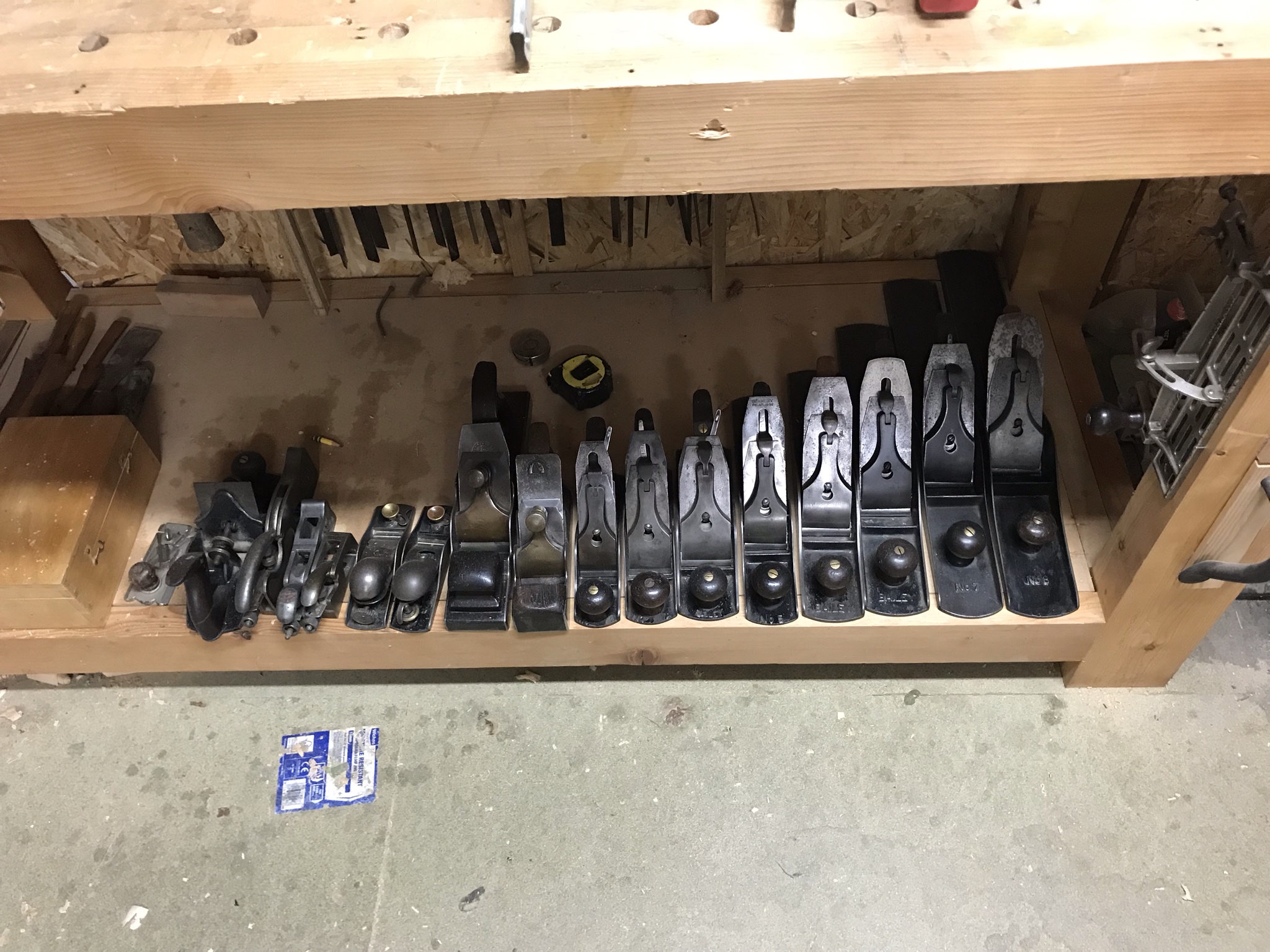ZippityNZ
Established Member
All 4 handles are wood 

That’s not strictly speaking true though. Here are my Stanley bench planes:Osvaldd":fwlb3z45 said:Lets not go there, I apologize. I’ll try to defuse this situation by saying, me being a mild autist, having older tools was important because I always felt everything made prior to the 60s was better quality. So I did a bunch of research and came to the conclusion that the only easily identifiable bench planes are the records.

He means "...the only easily identifiable BRITISH bench planes..."Osvaldd":2ri0mnpk said:...and came to the conclusion that the only easily identifiable bench planes are the records.
I need more info. Can you post pictures showing the frogs, and showing the bed of the planes with frogs removed?ZippityNZ":2fjhxm2k said:Here's a photograph showing the two planes with their different shaped irons


That's all the reason you need.ZippityNZ":3dp8j5c9 said:I care!!(
I agree.ED65":18ga3jvd said:That's all the reason you need.ZippityNZ":18ga3jvd said:I care!!(
The only comment I'd make here is that the quality control decreased, so the newer plane has a higher chance of being a lemon.ED65":18ga3jvd said:However, in terms of a difference between the two functionally, there shouldn't be one. Theoretically the ribbed design and slightly shorter casting makes for a jack that is stiffer and will therefore work better. But theory is sometimes just that, because of course how many millions of planes with soles this long or longer have no ribbing and work just fine?
So both are pretty sure to do everything they're called upon to do as already stated.
Correct.ZippityNZ":397h11ox said:Am I correct in thinking that planes without any webbing are older than those with?
Enter your email address to join: